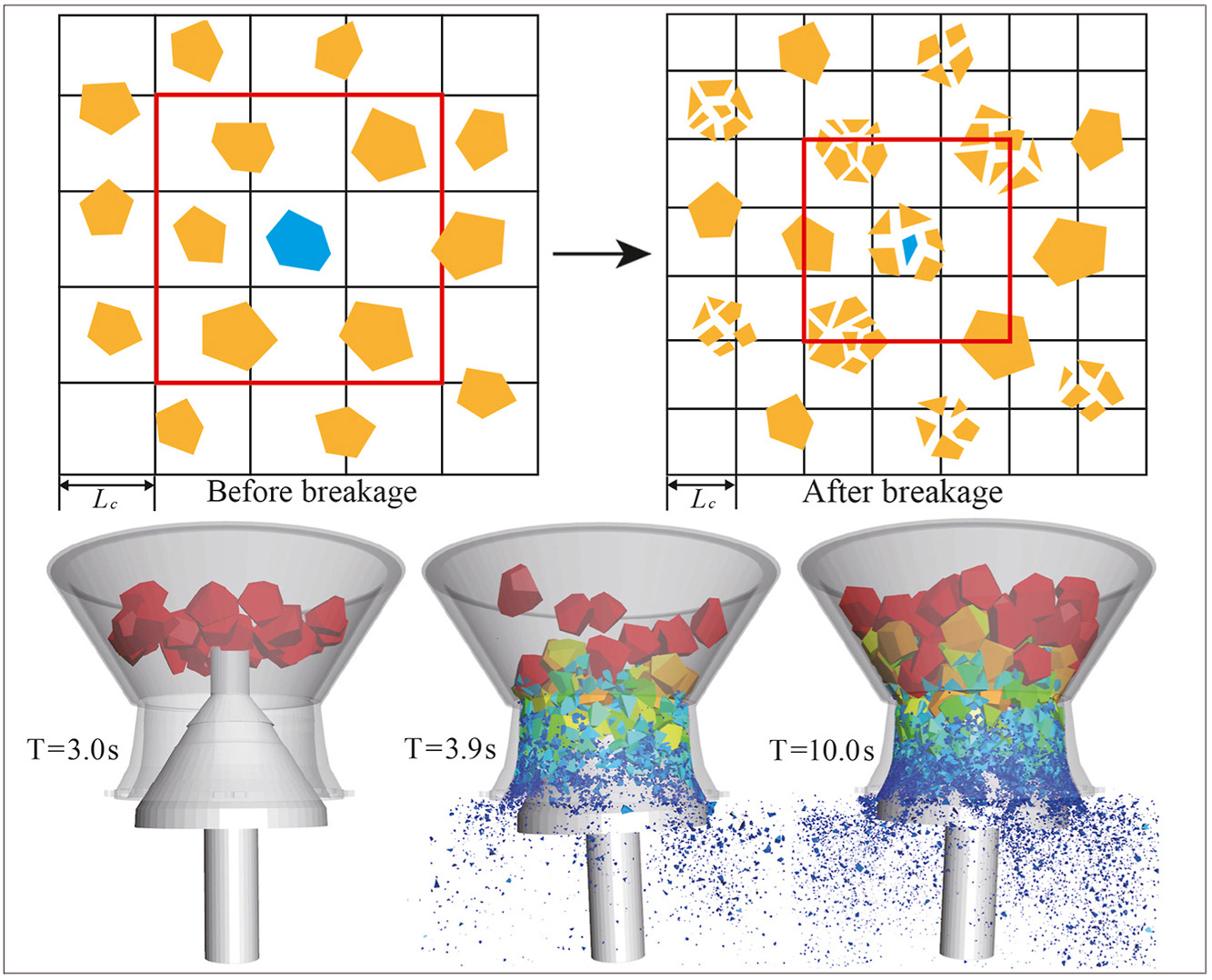• A dynamic cell size method is proposed to improve computational efficiency.
• Simulations of the breakage process in a cone crusher are conducted.
• Efficiency of the breakage simulation is highly improved by this new method.
• Accuracy of the breakage simulation is not influenced by the new method.
The discrete element method (DEM) has become a powerful tool to investigate the breakage process, which has drawn increasing attention in recent years. The process of particle breakage can be regarded as the reduction of the particle size, which results in the explosive growth of particle number, making the computation inefficient. Contact detection is a major process in DEM simulation. The cell size is a crucial parameter for contact detection and has a great influence on computational efficiency. The static cell size method is usually employed, and the size will be set before the simulation according to the particle size. Since the particle size changes during the breakage simulation, the static cell size method is no longer proper. As a result, a dynamic cell size method is proposed in this study. Two parameters are critical in this method that are key to the computational efficiency, including the number of neighbor particles retrieved for a specific particle (Np) and the number of search cells retrieved during the process of finding all neighbor particles (Nc). By integrating this new method, the cell size is supposed to be adjusted according to the ratio of Np to Nc to achieve a high efficiency of contact detection. By comparing the computational time of the same simulation case, the dynamic cell size method achieves substantial computational time reduction for equivalent simulation scenarios, and the efficiency under different cell sizes is recorded to validate the cell size in the subsequent test case.

